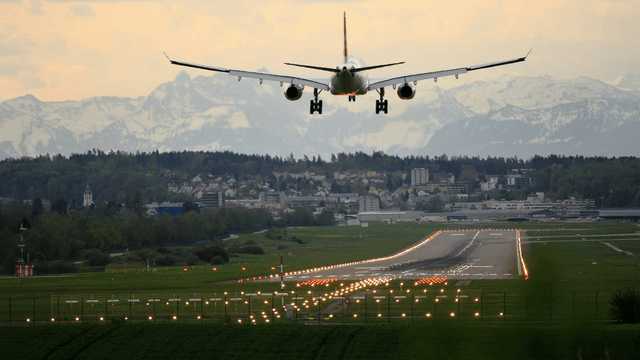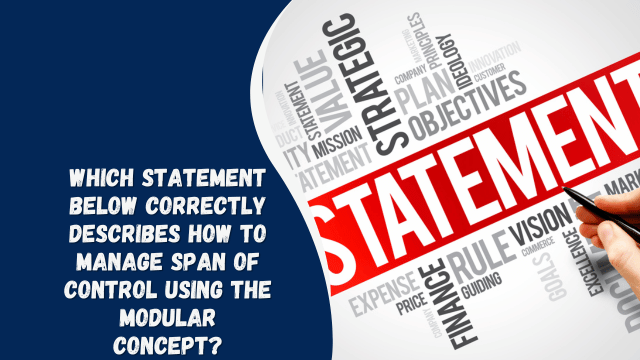A Comprehensive Guide to Choosing the Right Aviation Equipment

Aviation is an industry that relies heavily on the use of specialized equipment to ensure safe and efficient operations. Whether you are a pilot, aircraft owner, or aviation enthusiast, choosing the right aviation equipment is of utmost importance. The right equipment can enhance performance, improve safety, and contribute to the overall success of your aviation endeavors.
In this comprehensive guide, you will explore the various factors to consider when selecting aviation equipment.
Before diving into factors to consider when choosing aviation equipment, here are some types of aviation equipment you will need.
Types of Aviation Equipment
Navigation Equipment for Aviation
When it comes to aviation, navigation is of utmost importance. Pilots need accurate and reliable instruments to navigate through the skies and reach their destinations safely. Here is some essential navigation equipment that every pilot should consider.
1. Aviation Headsets
Aviation headsets are a vital piece of equipment for pilots as they provide clear communication and protect their hearing. These headsets are specially designed to cancel out engine noise, allowing pilots to hear and communicate with air traffic control and fellow crew members without any distractions.
They also provide a comfortable fit, ensuring pilots can wear them for extended periods without discomfort. With advanced features like noise-canceling technology and Bluetooth connectivity, aviation headsets have become indispensable tools for pilots in the modern aviation industry.
2. Weather Monitoring Systems
Weather conditions can change rapidly, and being aware of the current and forecasted weather is crucial for safe flying. Weather monitoring systems, such as onboard radar and satellite weather receivers, provide real-time weather information to pilots.
These systems enable pilots to identify hazardous weather conditions like thunderstorms, icing, and turbulence, allowing them to make informed decisions and adjust their flight plans accordingly. Investing in a reliable weather monitoring system can significantly enhance the safety of your flights.
3. Flight Computers
Flight computers, also known as Electronic Flight Bags (EFBs), have revolutionized the way pilots plan and navigate their flights. These portable devices combine various functions, including navigation, flight planning, performance calculations, and charts, into one compact unit.
With a flight computer, pilots can easily access vital information like airport databases, weather data, and route planning tools. They also eliminate the need for carrying stacks of paper charts and manuals, making flight operations more efficient and environmentally friendly. A reliable flight computer is an essential tool for any pilot looking to streamline their flight planning and navigation processes.
Safety Equipment for Aviation
Safety should always be a top priority in aviation. Pilots need to be prepared for any unexpected emergencies or situations that may arise during a flight. Here is some essential safety equipment that every pilot should have on board.
1. GPS Receivers
Global Positioning System (GPS) receivers have become a standard piece of equipment in aviation. These devices use satellite signals to provide accurate position, velocity, and time information to pilots.
GPS receivers enable pilots to navigate with precision, especially during low visibility conditions or when flying in unfamiliar areas. They also assist in emergency situations by providing search and rescue teams with the aircraft’s exact location. Having a reliable GPS receiver on board enhances situational awareness and improves overall flight safety.
2. Flight Bags
Flight bags are an essential accessory for pilots to carry all their necessary documents, charts, and equipment. These bags are designed to be durable, spacious, and organized, allowing pilots to have quick and easy access to their essential items during a flight.
Flight bags often feature multiple compartments, pockets, and holders for pens, flashlights, headsets, and other small aviation equipment. Investing in a high-quality flight bag ensures that pilots can keep their belongings safe, organized, and readily available whenever they need them.
Maintenance Equipment for Aviation
Proper maintenance is vital for keeping aircraft in optimal condition and ensuring their safe operation. Here is some essential maintenance equipment that every aviation professional should have.
1. Aviation Toolkits
Aviation toolkits consist of a wide range of tools and equipment necessary for aircraft maintenance and repairs. These toolkits typically include wrenches, pliers, screwdrivers, torque wrenches, and specialized tools for specific aircraft systems.
Having a comprehensive toolkit ensures that aviation professionals can carry out routine inspections, repairs, and maintenance tasks effectively and efficiently. Regular maintenance using the right tools helps prevent mechanical failures and ensures the airworthiness of the aircraft.
2. Aircraft Cleaning Equipment
Keeping aircraft clean is not only for aesthetic purposes but also plays a crucial role in maintaining their performance and safety. Aviation professionals should have the necessary cleaning equipment such as microfiber cloths, cleaning solutions, and brushes to remove dirt, debris, and contaminants from the aircraft’s exterior and interior surfaces. Regular cleaning not only enhances the appearance of the aircraft but also prevents corrosion and damage to critical components.
Ground Equipment for Aviation
Ground equipment is essential for various ground operations, including aircraft movement and maintenance. Listed below are just two pieces of important ground equipment.
1. Tow Bars
Tow bars are used to move aircraft on the ground, especially in situations where the aircraft’s engines are not operational. These bars connect to the aircraft’s nose wheel or tow points, allowing ground crew or pilots to tow the aircraft safely and efficiently. Tow bars come in various sizes and designs to accommodate different aircraft types and sizes. Investing in a reliable aircraft tow bar ensures that aircraft can be moved easily, reducing the need for external assistance and minimizing downtime during ground operations.
2. Chocks
Chocks are absolutely indispensable in the world of aviation. These little pieces of ground support equipment play a crucial role in ensuring the safety and stability of aircraft on the ground. Just imagine a plane parked on a sloping runway without chocks – it would be like trying to hold a wild horse without a bridle! Chocks provide that much-needed leverage and prevent the aircraft from rolling or shifting unexpectedly. They are designed to fit snugly against the wheels, effectively immobilizing the aircraft and allowing the ground crew to perform necessary maintenance or loading operations.
Factors to Consider
1. Safety as the Top Priority
When it comes to aviation, safety should always be your top priority. You want to invest in equipment that you can trust, especially when you’re thousands of feet in the air. Reliability is key here. Aviation equipment needs to function flawlessly to ensure the safety of both yourself and your passengers.
One crucial aspect to consider is the track record of the manufacturer. How long have they been in the industry? Do they have a reputation for producing high-quality, reliable equipment? Researching the manufacturer’s history and reading reviews from other pilots can give you valuable insights.
Additionally, it’s crucial to look for equipment that meets or exceeds industry safety standards. Look for certifications and approvals from reputable organizations such as the Federal Aviation Administration (FAA) or the European Union Aviation Safety Agency (EASA). These certifications ensure that the equipment has undergone rigorous testing and meets the required safety standards.
Lastly, consider the level of redundancy built into the equipment. Redundancy refers to the presence of backup systems or components that can take over in case of a failure. Having redundant systems can significantly increase the safety of your flight, giving you peace of mind knowing that you have backup options in case of an emergency.
Safety should always come first when choosing aviation equipment. Investing in reliable and certified equipment with built-in redundancy will help ensure a safe and secure flying experience.
2. Performance and Functionality
While safety is paramount, performance and functionality are also essential factors to consider when choosing aviation equipment. After all, you want equipment that not only keeps you safe but also enhances your flying experience.
One key aspect to consider is the compatibility of the equipment with your specific aircraft. Whether it’s avionics, navigation tools, or communication systems, ensuring seamless integration is crucial. Compatibility ensures that the equipment works harmoniously with your aircraft’s existing systems, minimizing any potential issues or conflicts.
Another important consideration is the performance capabilities of the equipment. Does it provide the features and functionalities that you require for your flying needs? For example, if you regularly fly in busy airspace, having a navigation system with advanced traffic alerting capabilities can greatly enhance your situational awareness and safety.
Additionally, consider the user interface of the equipment. Is it intuitive and easy to use? Complex and convoluted interfaces can be distracting and may lead to errors during flight operations. Look for equipment that offers a user-friendly interface and controls that are easily accessible and understandable.
Ultimately, choosing aviation equipment that offers optimal performance and functionality will enhance your flying experience and make your time in the air more enjoyable and efficient.
3. Cost Considerations
Aviation equipment can be a significant investment, and cost is an important factor to consider. However, it’s essential to strike a balance between quality and affordability. While it may be tempting to opt for the cheapest option available, compromising on quality can have serious consequences when it comes to aviation.
Keep in mind that investing in high-quality, reliable equipment will pay off in the long run. Cheaper options may require more frequent maintenance, have a shorter lifespan, or lack the necessary features and capabilities. These factors can lead to increased costs over time.
It’s also important to consider the total cost of ownership. This includes not only the initial purchase price but also ongoing maintenance, repair, and upgrade costs. Some manufacturers may offer warranty or support packages that can help offset these expenses. Take these factors into account when evaluating the overall cost-effectiveness of the equipment.
Furthermore, consider the value that the equipment brings to your flying experience. Will it enhance your safety, efficiency, or comfort? While cost is a significant consideration, it shouldn’t be the sole determining factor. Focus on finding the right balance between quality and affordability to ensure that your investment is worthwhile in the long run.
4. Maintenance and Support
Aviation equipment needs to withstand the test of time and remain in peak condition to ensure optimal performance and safety. Therefore, it’s crucial to consider the maintenance requirements and support available for the equipment you’re considering.
Before making a purchase, research the manufacturer’s reputation for product support and customer service. Do they have a dedicated support team? Are spare parts readily available? Consider reaching out to other pilots or aviation professionals for their experiences and recommendations.
Additionally, consider the ease of maintenance and the availability of certified technicians. Some equipment may require specialized knowledge or tools for maintenance and repairs. Ensuring that there are qualified technicians available who can service the equipment will save you time and potential headaches down the line.
Furthermore, look for equipment that comes with comprehensive documentation and user manuals. Clear instructions and troubleshooting guides can help you address minor issues on your own, reducing downtime and the need for external support.
5. Regulatory Compliance
The aviation industry is heavily regulated, and it’s essential to ensure that the equipment you choose complies with the relevant regulations and standards. Non-compliant equipment can result in legal issues, grounding of your aircraft, or even endangering your safety.
Check for certifications and approvals from regulatory bodies such as the Federal Aviation Administration (FAA), the European Union Aviation Safety Agency (EASA), or other local aviation authorities. These certifications ensure that the equipment meets the required standards and has undergone the necessary testing and evaluation.
Stay informed about any regulatory changes or updates that may affect the equipment you’re considering. Regulations can evolve over time, and it’s crucial to ensure that your equipment remains compliant throughout its lifespan. Manufacturers often provide software updates or firmware upgrades to address regulatory changes, so consider the availability of these updates when making your decision.
6. The Specific Needs of Your Operation
Finally, it’s important to consider the specific needs of your operation when choosing aviation equipment. Every pilot and aircraft has unique requirements, and what works for someone else may not necessarily work for you.
Evaluate the type of flying you do and the environments you typically operate in. For example, if you frequently fly in remote areas with limited ground-based navigation aids, having a robust and reliable GPS system becomes even more critical. On the other hand, if you primarily fly short distances in controlled airspace, certain features may be less crucial.
Consider the scalability of the equipment as well. If you plan to expand your operation or upgrade your aircraft in the future, choosing equipment that can grow with your needs will save you both time and money.
Additionally, consider your own skill level and experience. Some equipment may have a steeper learning curve or require advanced training to operate effectively. Be honest with yourself about your capabilities and choose equipment that aligns with your skill level.
Conclusion
Choosing the right aviation equipment is a critical decision that can impact the safety, performance, and financial aspects of your aviation operations. Remember, investing in high-quality and reliable aviation equipment is an investment in the safety and efficiency of your aviation endeavors.




